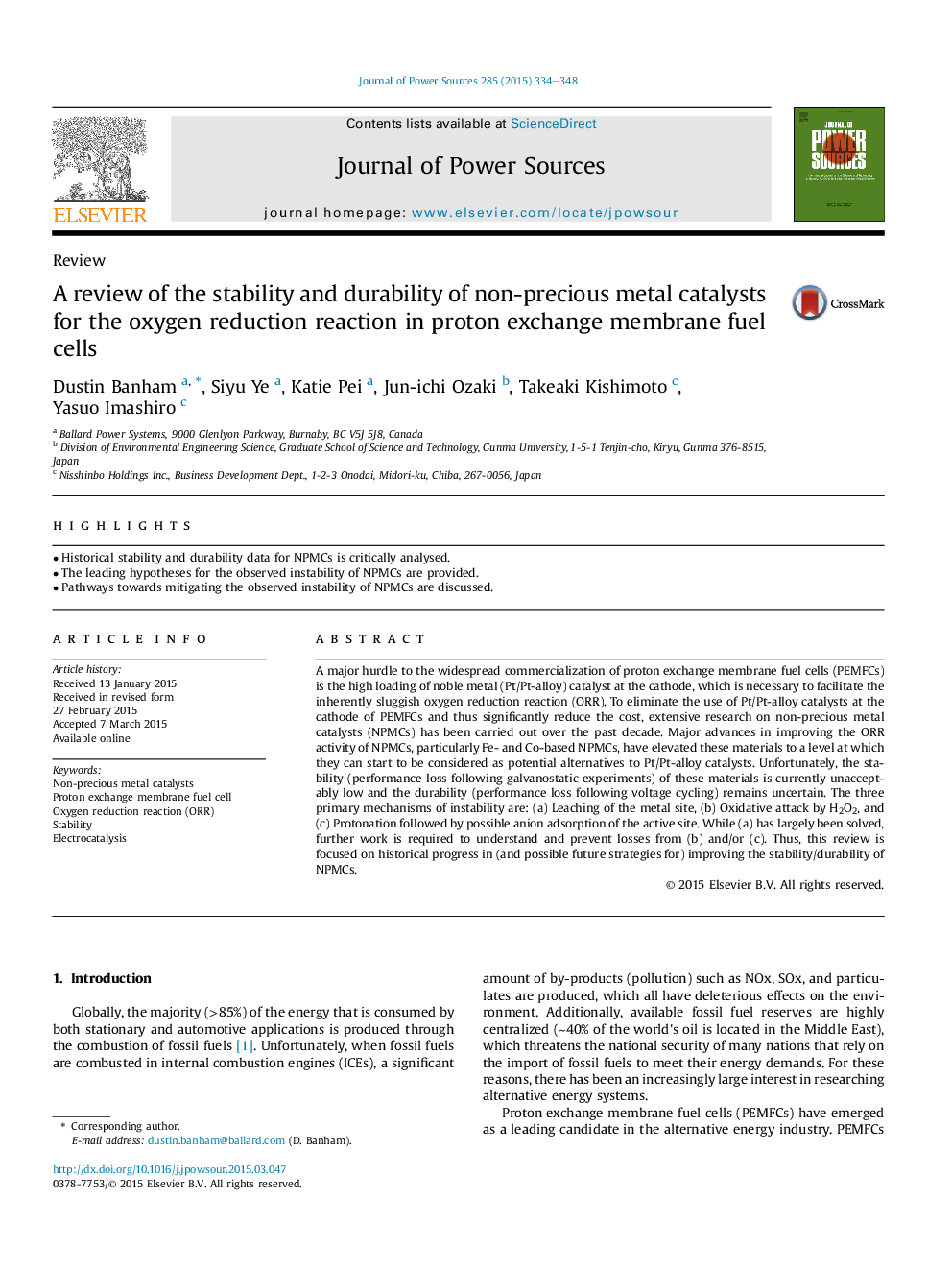| Article ID | Journal | Published Year | Pages | File Type |
|---|---|---|---|---|
| 7732074 | Journal of Power Sources | 2015 | 15 Pages |
Abstract
A major hurdle to the widespread commercialization of proton exchange membrane fuel cells (PEMFCs) is the high loading of noble metal (Pt/Pt-alloy) catalyst at the cathode, which is necessary to facilitate the inherently sluggish oxygen reduction reaction (ORR). To eliminate the use of Pt/Pt-alloy catalysts at the cathode of PEMFCs and thus significantly reduce the cost, extensive research on non-precious metal catalysts (NPMCs) has been carried out over the past decade. Major advances in improving the ORR activity of NPMCs, particularly Fe- and Co-based NPMCs, have elevated these materials to a level at which they can start to be considered as potential alternatives to Pt/Pt-alloy catalysts. Unfortunately, the stability (performance loss following galvanostatic experiments) of these materials is currently unacceptably low and the durability (performance loss following voltage cycling) remains uncertain. The three primary mechanisms of instability are: (a) Leaching of the metal site, (b) Oxidative attack by H2O2, and (c) Protonation followed by possible anion adsorption of the active site. While (a) has largely been solved, further work is required to understand and prevent losses from (b) and/or (c). Thus, this review is focused on historical progress in (and possible future strategies for) improving the stability/durability of NPMCs.
Keywords
Related Topics
Physical Sciences and Engineering
Chemistry
Electrochemistry
Authors
Dustin Banham, Siyu Ye, Katie Pei, Jun-ichi Ozaki, Takeaki Kishimoto, Yasuo Imashiro,
